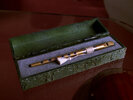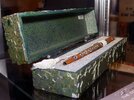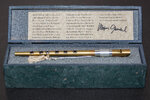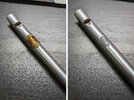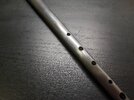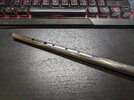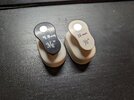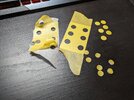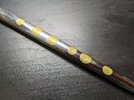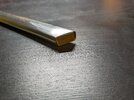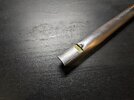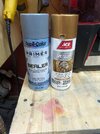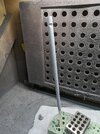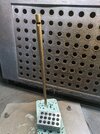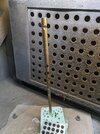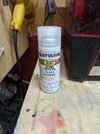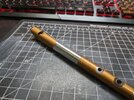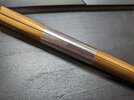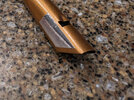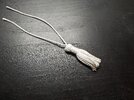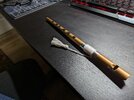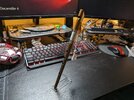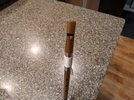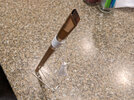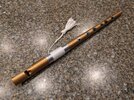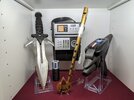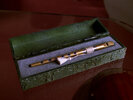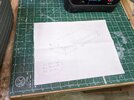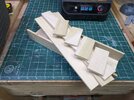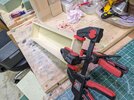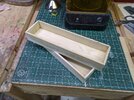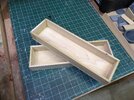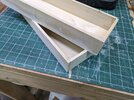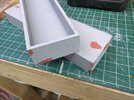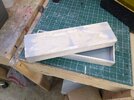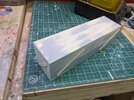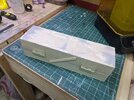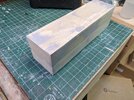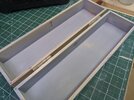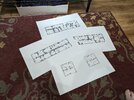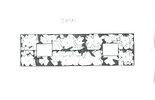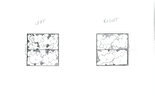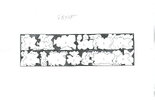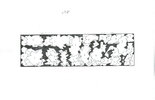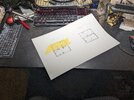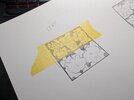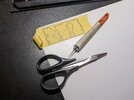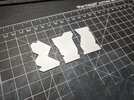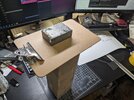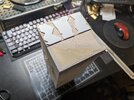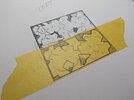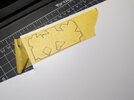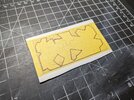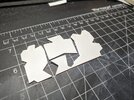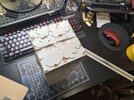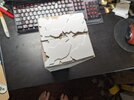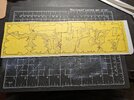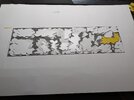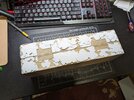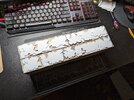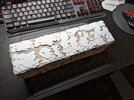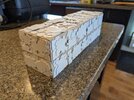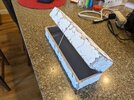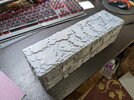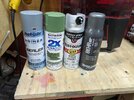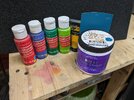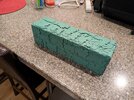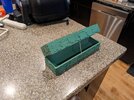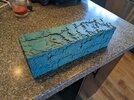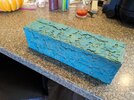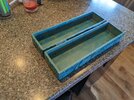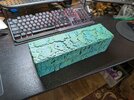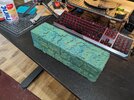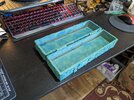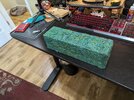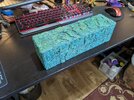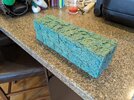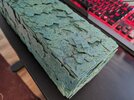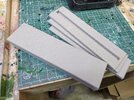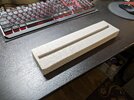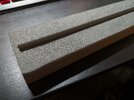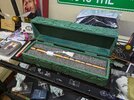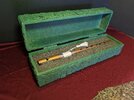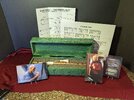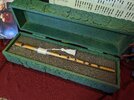Hi all:
Last year was my first opportunity to participate in the RPF Secret Santa thread, and it was a lot of fun! What I did not expect was that this became an opportunity to push myself in ways that I had not expected, and to learn several new skills!

My interpretation of the Ressikan flute and box.
I hope to use this thread over the next few days to document my full build, as I took photos all along the way. I also intend to share a few thoughts about some of the decisions that were made along the way.
BACKGROUND:
The original prop was not playable. It was a piece of rolled sheet metal modeled after the original “Clarke Tinwhistle.” This means that Patrick Stewart had to fake it, and the music was dubbed in later. But it is so similar to the real Clarke that a playable version is an option, for a very small sacrifice of accuracy. In fact, some RPF users have used the same whistle to make their own, and Morgan Gendel (one of the TNG Ressikan flute’s creators), made several replicas based on the Clarke whistle. The Clarke is as accurate as you can get if you want it to play music. And yes, it CAN play Picard's Kataanian tune!
You might also notice that the Ressikan flute looks a little different in subsequent episodes. It also looked different in Star Trek: Nemesis and later as offered at auction, with metal grommets around the finger holes and such. This is due to the fact that the flute was modified several times during TNG’s run before it was finally sold at auction for $45,000. I chose not to go for the newer look, but instead opted to stay mostly with the purity of how it looked at the end of the original episode when Picard took it out of the box and held it to his heart.
WALKING THE LINE:
There's hardcore accuracy on one end of the spectrum, and then there's in-universe idealization on the other. I chose to walk that tightrope, by getting as close as I possibly could to prop accuracy, but I did NOT want to sacrifice any aspects that would make it feel more real to the character of Picard himself. I was aiming for a Kataanian artifact for one type of museum, NOT a collectible prop for another type of museum!
As an example, although the first prop version of the flute is more shiny than my final version, it's supposed to look and feel a bit older, not so pristine. The last versions of the prop were certainly more dulled!
In the next day or so, I will post step-by-step photos of my process, along with any useful observations I found along the way.
Hope you enjoy! This was truly a labor of love that I approached very slowly and carefully, because I love that episode so much. Although it was a gift, I also made a second flute at the same time for myself.
Bill
Last year was my first opportunity to participate in the RPF Secret Santa thread, and it was a lot of fun! What I did not expect was that this became an opportunity to push myself in ways that I had not expected, and to learn several new skills!
- How to sand metal to a fine polish
- How to make easy circular masks
- How to make tassels
- How to tie a whipping wrap
- How to easily transfer a printout to styrene plastic
- How to sponge paint
- How to spatter (not splatter) paint
My interpretation of the Ressikan flute and box.
I hope to use this thread over the next few days to document my full build, as I took photos all along the way. I also intend to share a few thoughts about some of the decisions that were made along the way.
BACKGROUND:
The original prop was not playable. It was a piece of rolled sheet metal modeled after the original “Clarke Tinwhistle.” This means that Patrick Stewart had to fake it, and the music was dubbed in later. But it is so similar to the real Clarke that a playable version is an option, for a very small sacrifice of accuracy. In fact, some RPF users have used the same whistle to make their own, and Morgan Gendel (one of the TNG Ressikan flute’s creators), made several replicas based on the Clarke whistle. The Clarke is as accurate as you can get if you want it to play music. And yes, it CAN play Picard's Kataanian tune!
You might also notice that the Ressikan flute looks a little different in subsequent episodes. It also looked different in Star Trek: Nemesis and later as offered at auction, with metal grommets around the finger holes and such. This is due to the fact that the flute was modified several times during TNG’s run before it was finally sold at auction for $45,000. I chose not to go for the newer look, but instead opted to stay mostly with the purity of how it looked at the end of the original episode when Picard took it out of the box and held it to his heart.
| Screencap from Season 6 episode "Lessons". |
WALKING THE LINE:
There's hardcore accuracy on one end of the spectrum, and then there's in-universe idealization on the other. I chose to walk that tightrope, by getting as close as I possibly could to prop accuracy, but I did NOT want to sacrifice any aspects that would make it feel more real to the character of Picard himself. I was aiming for a Kataanian artifact for one type of museum, NOT a collectible prop for another type of museum!
As an example, although the first prop version of the flute is more shiny than my final version, it's supposed to look and feel a bit older, not so pristine. The last versions of the prop were certainly more dulled!
In the next day or so, I will post step-by-step photos of my process, along with any useful observations I found along the way.
Hope you enjoy! This was truly a labor of love that I approached very slowly and carefully, because I love that episode so much. Although it was a gift, I also made a second flute at the same time for myself.
Bill
Last edited:

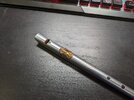
![Star.Trek.The.Next.Generation.s05e25 - The Inner Light.mkv_snapshot_43.37_[2023.11.29_17.50.10].jpg Star.Trek.The.Next.Generation.s05e25 - The Inner Light.mkv_snapshot_43.37_[2023.11.29_17.50.10].jpg](https://therpf-f28a.kxcdn.com/forums/data/attachments/1435/1435350-aad0e482eb9d7a1b41c278240ba5e6f2.jpg)
